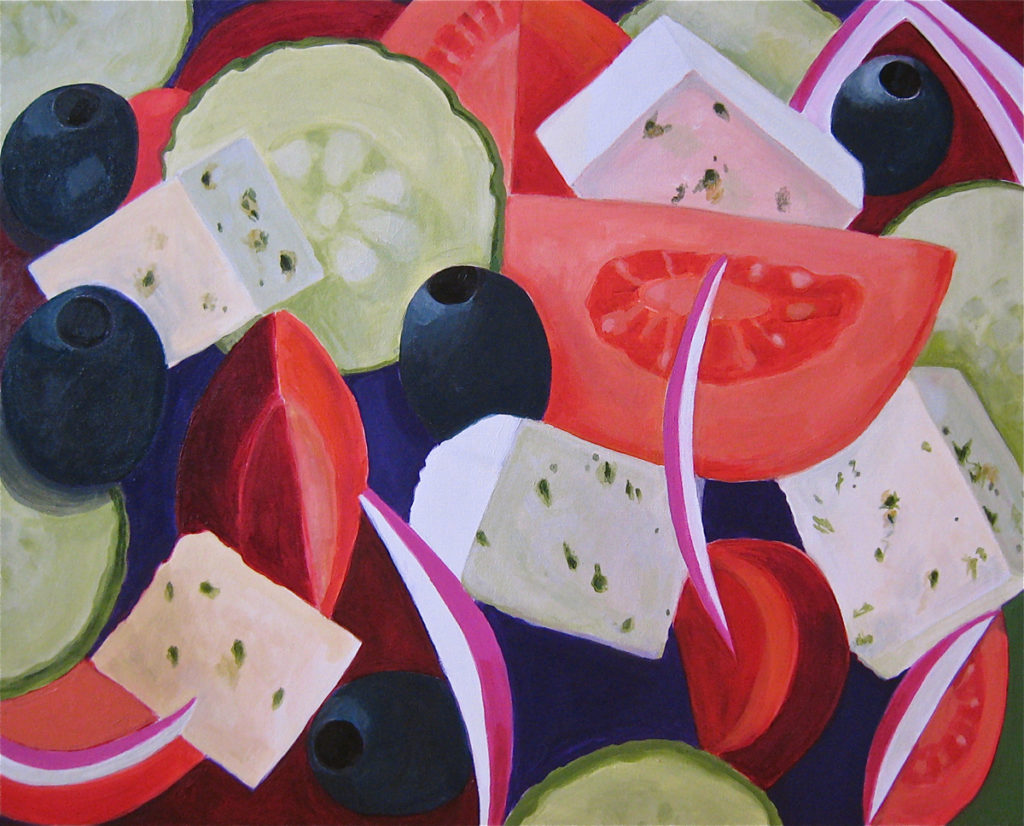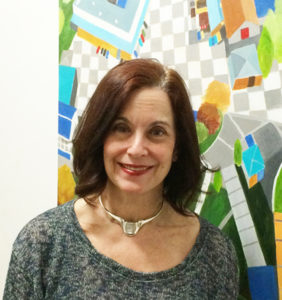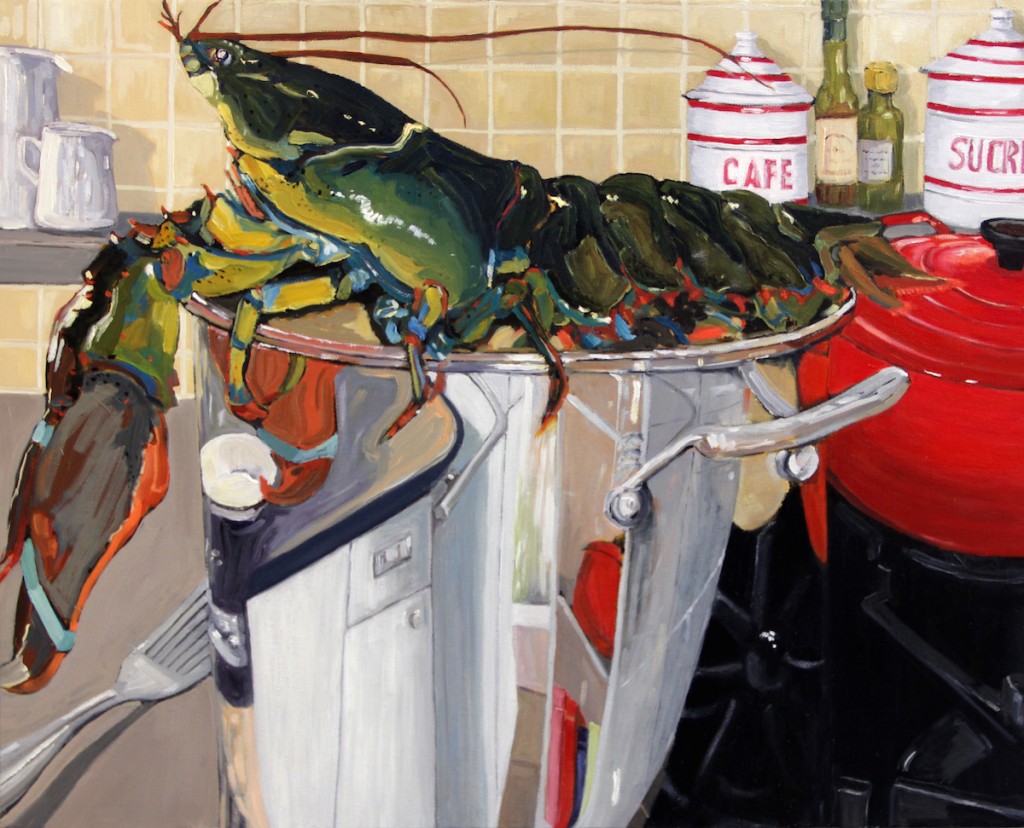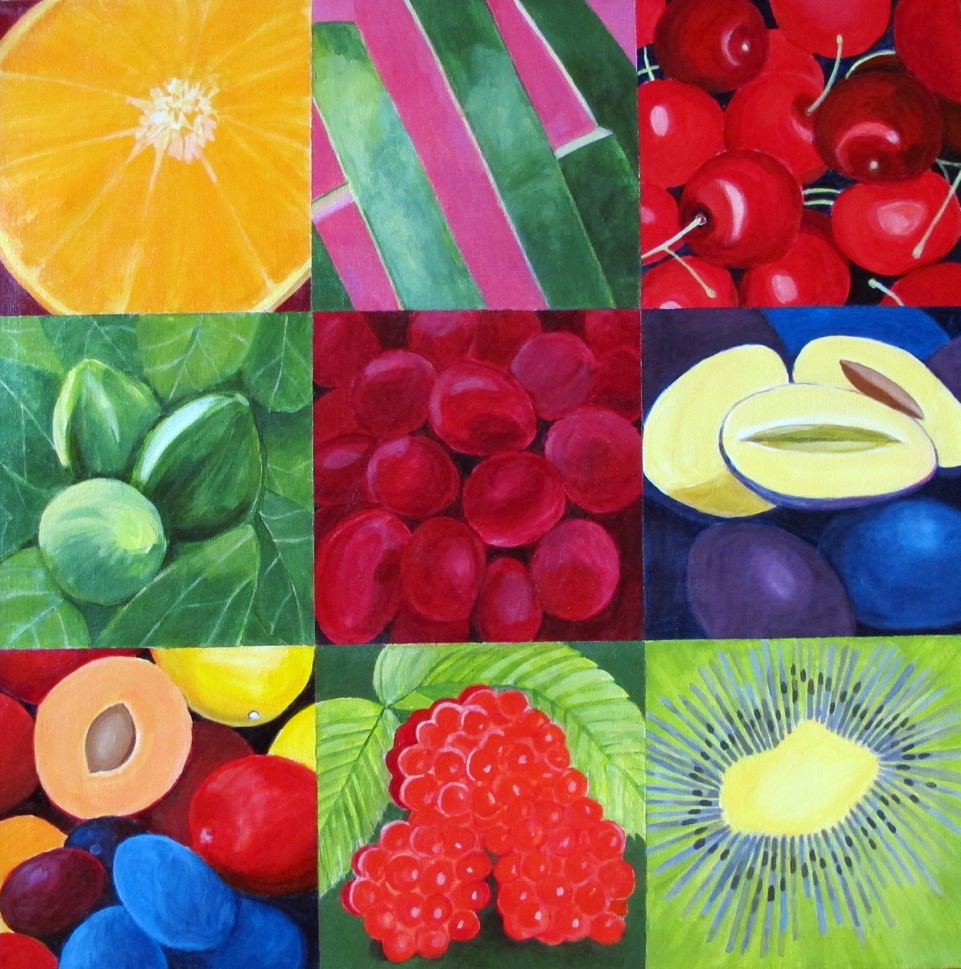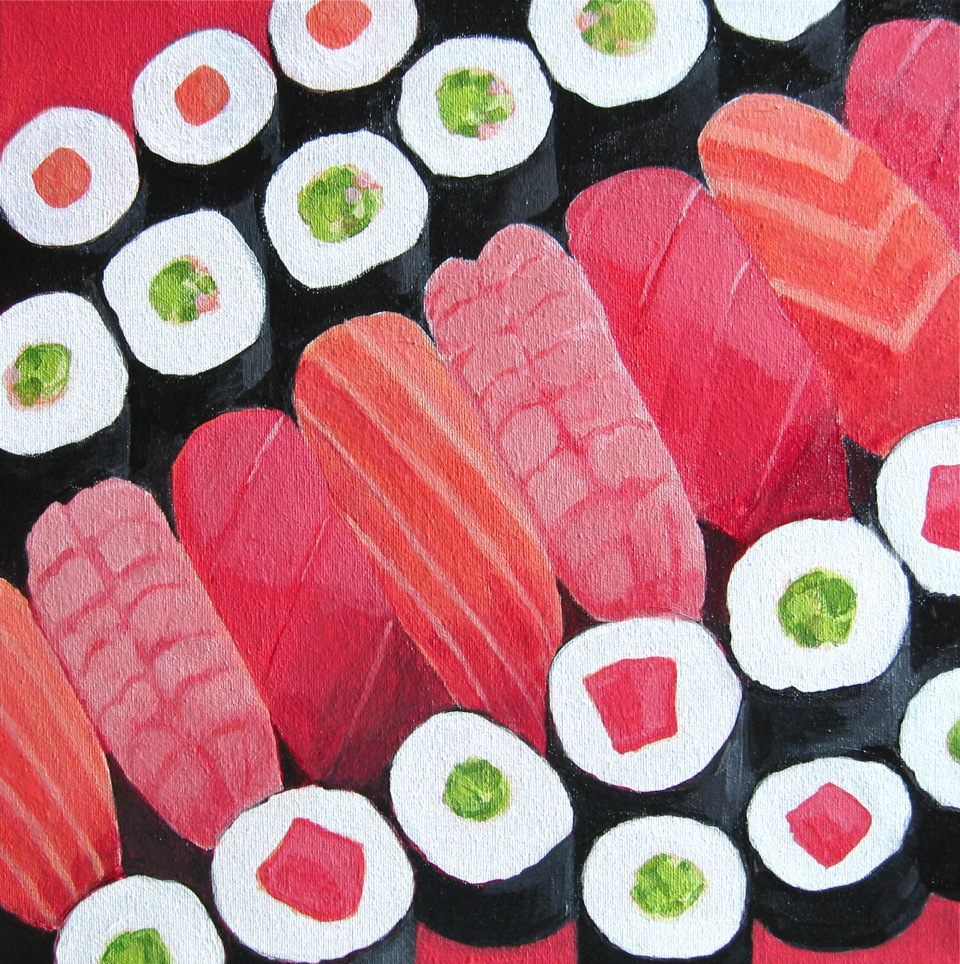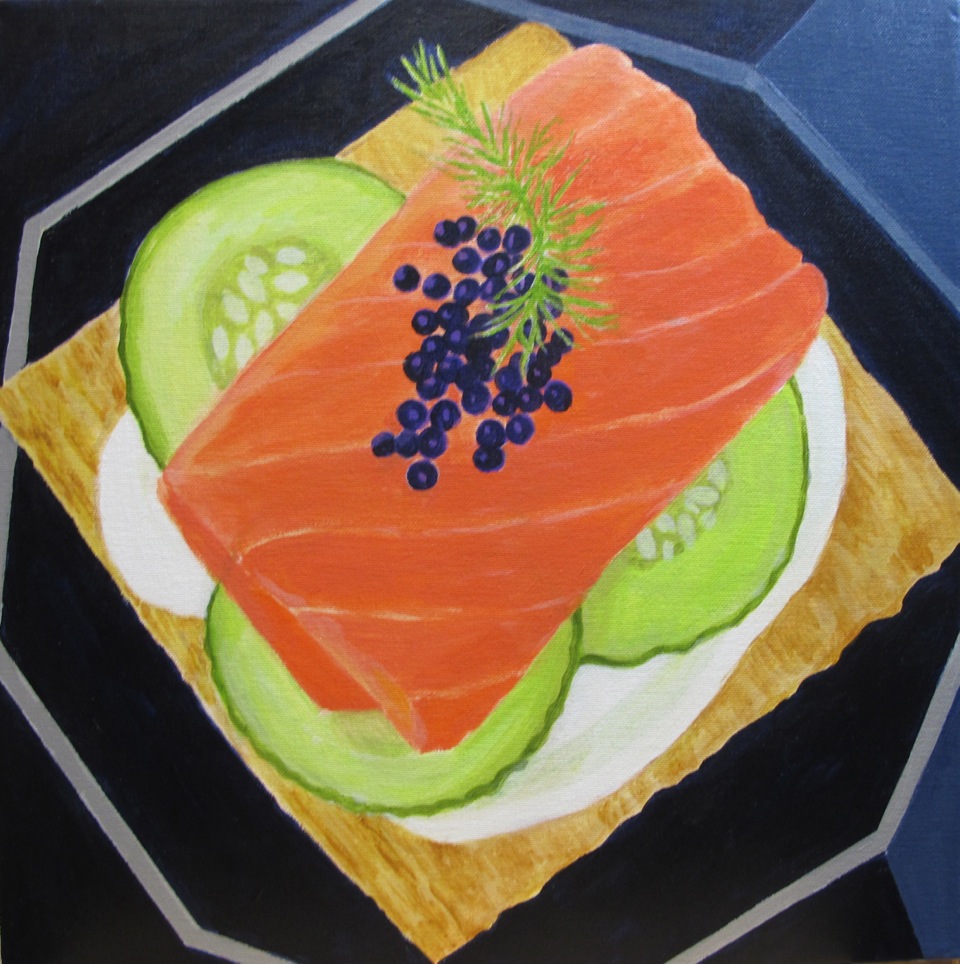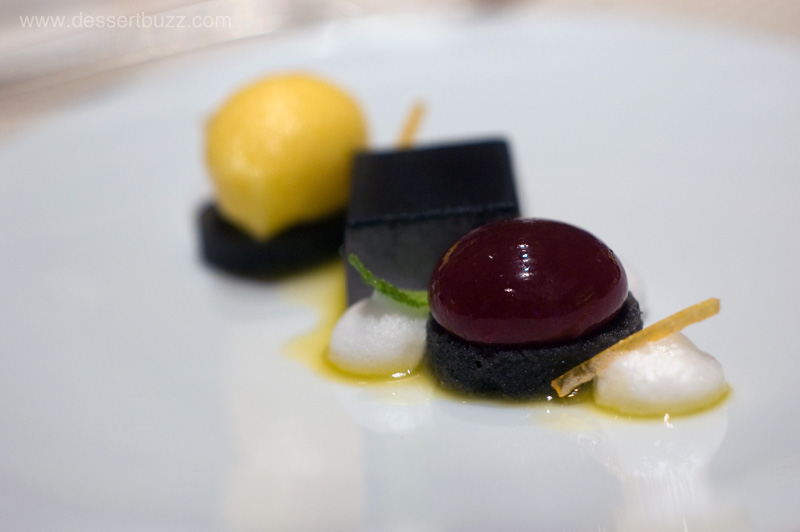Consider the Lobster. © Anna Cypra Oliver 2014. Oil on canvas 18″x20″.
Stan’s Madeleine
By
Anna Cypra Oliver
Haut-cuisine extravaganzas like Plaza-Athéneé Lobster Soufflé are not usually my thing, either as a diner or as a cook—too rich, too fattening, too much of a production—but when my neighbor Stan and I attempted to make it one New Year’s Day and failed, it haunted me. The soufflé lurked out there, along with the perfect rye bread and a Kosher dill that mimicked the exact taste and texture of a Guss’ Pickles pickle, in the deep pool of unrealized cooking dreams, just beyond reach. Besides, Stan, whose disappointment was much keener than mine, claimed it was one of the best things he’d ever eaten.
Stan was an accomplished home cook and for many years, Plaza-Athéneé Lobster Soufflé had been his specialty. He had promised several times to make it for my husband Stephan and me, but each time we came to dinner with Stan and his wife, Leslie, the dish failed to appear. He baked delicate gougères, a beautiful whole red snapper with herbs, a gorgeous rosemary encrusted leg of lamb, but no soufflé. Finally, during a dinner at our house, he had to admit that he couldn’t do it. Already in his late eighties, he found it increasingly difficult to make any of the elaborate dishes he used to execute with ease. The lobster soufflé required too many steps, beginning with killing, cutting up and cooking the lobsters, and took too many hours—three, at least—for him to contemplate.
Stan looked chagrined after his confession, obviously embarrassed to have to acknowledge that he was too old for the job. That’s when, impulsively, I suggested that we make it together. I had never made a soufflé and would get a lesson in how to do it. Stan would get the aid of my hands. I would be his sous-chef and do all the clean-up, enabling him to concentrate his energy on cooking. Together, surely, we could manage.
Stan emailed me a copy of his recipe, his shopping list of ingredients penciled in a column down one side. I would make sure we had everything we needed on hand: two lobsters, a carrot, an onion, chives, parsley, Cognac, dry white wine, heavy cream, dry sherry, butter, flour, eggs, and parmesan cheese. I read the sheet over once, twice, a third time, trying to fix an outline of the many steps in my mind. It was the sort of recipe that had to be executed quickly, without hesitation: fall behind and the cream would boil over while the butter burned.
It also seemed to have a mistake embedded in it, or at least a sentence that would yield no obvious sense, no matter how many times I read it. Sauté the chopped up lobsters in “hot salad oil,” add them to the mirepoix (finely chopped carrot, onion, chives and parsley sautéd in butter), along with paprika, some Cognac, half a cup of dry white wine and a cup of heavy cream, then cook the mixture for eighteen to twenty minutes. Remove the lobster pieces and “reduce the liquid remaining in the pan to about ½ the original quantity. Add 1 cup cream sauce and 3 tablespoons each of heavy cream and dry Sherry.” Add cream sauce to the liquid in the pan, a liquid already laden with cream? What cream sauce? I could see that Stan was confused, too, since his list included the notation “1 cup cream sauce?”
As soon as Stan and Leslie arrived, Stan and I headed into the kitchen to confer on the recipe, trying together to decipher that opaque bit about the cream sauce. We agreed that it must mean the cream sauce made from sautéing the lobster, since there was no other. What it was being added to remained a mystery, but the essential point seemed to be that it should be strained and then divided between the pan and a gravy boat, so that some of the cream sauce would be poured over the lobster pieces at the base of the soufflé and some would be reserved to top off at the table. Just to be certain I checked some of my other cookbooks. Sure enough, there it was: Lobster Plaza Athéneé, in Jacques Pépin’s most recent cookbook, The Essential Pépin. But his recipe was completely different, most notably in regard to the lobster sauce itself, which it said should be served on the side of a separately made cheese soufflé. “Oh, no,” Stan said. “The lobster has to go at the bottom of the pan. I remember that distinctly. You cut through the crown of the soufflé and out comes this gorgeous lobster sauce. That’s what makes it so spectacular.”
Stan had long since forgotten where he found his recipe, a photocopy with no author or cookbook title printed on it, but what he did know was that he had first tasted that particular soufflé in the lavish gold and white dining room of the Hôtel Plaza Athéneé itself. When I asked, he announced the date, 1969, with a certainty that suggested the significance of the memory and then would say no more, giving me a sly, cat-who-ate-the canary smile. A woman, his smile said, a beautiful woman, most likely, in Paris when he was still almost young. The image of her and of the day they dined under the chandeliers of the grand salon was so obviously fresh in his mind that when he spoke of the experience—or wouldn’t— Leslie, who came into his life well after 1969, flashed her own significant, mostly indulgent smile and rolled her eyes. Still, clear as it seemed to be, I wondered which was right, his memory or Jacques Pépin’s recipe, since Pépin noted in his lead paragraph that he had worked at the Plaza Athéneé in the 1950s and had learned to make the dish in its kitchens. But this was Stan’s show. I would defer to him. And it did sound more spectacular to do it his way.
Leaving our spouses to sit in front of the living room fire, we poured ourselves glasses of the lovely dry Riesling Stan had brought, donned aprons and got to work. Everything went well at first. Stan glanced at the small mound of carrots I’d chopped for the mirepoix and gave a nod of satisfaction: I’d do fine as a sous-chef. In the middle of my suggesting that I call Stephan in to kill the two extremely hard-shell two-pound lobsters, Stan took my butcher knife from the rack, smacked a lobster onto a cutting board and in one sharp downward motion crunched the blade lengthwise through its head. No need, then, I thought, of any extra help. Stan deftly removed the legs and tail from the carapace, unperturbed by the way the creature continued to thrash and twitch—with its brain stem cleaved in half, it was, presumably, dead. After the pieces had simmered in cream, he laboriously picked every bit of meat from the shells.
Half-way through the preparation, Stan said he needed to take a break. It seemed a good stopping point: the lobster was resting in its sauce; the next step would be to make the soufflé. We sat with Stephan and Leslie, sipping wine and savoring the tarragon Oysters Rockefeller that I’d prepared as an appetizer. About half an hour later, Stan set down his glass and said, “I’m ready.” Then he marched into the kitchen. Eggs needed to be separated, egg whites whipped until stiff, Parmesan grated, the soufflé pan buttered, and the lobster sauce reheated, but before I’d had a chance to do any of this prep work Stan was already at the stove, making a roux and blending it with hot milk. I rushed to catch up with him, getting the eggs ready only seconds before he reached a hand out for the bowl of yolks. It was then, between one gesture and the next, that Plaza-Athéneé Lobster Soufflé slipped the hook and sank without a thrash into private legend, one of the big ones that got away. Before I could read the final, complicated steps one last time, Stan poured the mix of roux, hot milk, egg yolks, folded egg whites and cheese into the soufflé pan. Then he added the lobster and its sauce to the dish. A moment later, he stopped dead, looked at the pan, looked at me, shook his head. “What have I done?” he asked. The lobster, of course, as his memory and our cross-checking had verified, should have gone at the bottom of the pan, not on top. Weighted down with all that cream and shellfish, the egg mixture would never rise.
Stan looked stricken: even with my help, he couldn’t manage. My own face flushed red, as if the mistake were mine. And in a way, it was. I felt terrible for having pushed him to do something he’d already known was beyond him now. But it was New Year’s Day and after all that effort, we couldn’t just throw the mess away. Stan and I agreed to bake it anyway, promising each other that our creation, if not quite the famed dish of memory, would no doubt taste good. And indeed, the lush, creamy pudding that came out of the oven at the end was quite delicious. But we knew, Stan and I, that we were eating salvage. It was not what we meant, at all. The failure lay heavy on us both.
Soufflés, except of the occasional dessert variety, are rare on modern menus in the United States, done in by the same cultural shift that killed the once ubiquitous quiche: an obsession with fat and cholesterol. (“What lovely little luncheons and suppers we used to have in the ‘60s,” Julia Child once lamented, “when real people ate quiche.”) All those eggs! All that cheese! Don’t even mention the butter! And even as an appetite for eggs and fat has stealthily returned, butter and bacon and butterscotch pudding made safe again by statins, controversial new research about the benefits of “natural” fats, and something of a devil-may-care attitude by foodies toward heart disease, the soufflé has yet to make a comeback. I am now forty-five and despite the hundreds of restaurant meals I’ve eaten in the last two decades, I have never had one. Nor have I ever known anyone, besides Stan, to make them at home.
A glance at Stan’s old copy of the recipe is enough to know that it dates from a different era: it was obviously printed in the mid-twentieth century, around the same time as Mastering the Art of French Cooking, which uses a similar typography. The font alone evokes a vanished world of formal meals served in sumptuous salons, glittering with crystal and candlelight; of a time when a fancy dinner was an occasion, to dress, to indulge, before anyone would have dreamed of wearing jeans to dine; of Paris when the very notion of the city, especially for Americans of a certain age (my Jewish grandmother, even post-Vichy, post-Drancy, was one of these), was the ne plus ultra of sophistication and romance. Today’s zeitgeist equates formality with pretension, white tablecloths with stuffiness and elitism, but I miss the dress-up occasions with my grandparents that I remember from my childhood and young adulthood, the sense of specialness, the sense of theater.
A quick online search confirms my guess about the period. When I type some of the recipe writer’s purple introductory prose—“Have you ever been in Paris when the horse-chestnut trees are in their final, vulnerable bloom….”—into Google, the source, or so it seems, pops up immediately: “Classes in Classic Cuisine: Entrée Soufflés,” by Louis Diat, Gourmet, October 1956. There it is in its glorious entirety, including not only the lobster recipe but eight other soufflés; a tiny black and white photograph of the distinguished-looking Louis Diat; and the first page of his introduction, which is missing from Stan’s copy. (“It is unfortunate,” Diat writes soothingly, “that Soufflés have been associated so closely with the intricate mysteries of haute cuisine that many people hesitate to attempt them. Soufflés have been labeled ‘overly rich,’ ‘very expensive,’ and ‘difficult to make,’ but none of these accusations is true.” To which I can only say, thinking of my experience with Stan, Uh huh.)
Of course, the text I find on the web isn’t quite the same as Stan’s lovingly preserved artifact. The Internet has transmuted the elegant Granjon typeface of the original into a crowded Times Roman and eliminated the lovely little line drawing of the grand Plaza-Athenée dining room, stripping the article, both conceptually and as a physical object, of the sense of time and place so palpable in the original. And that purple prose seems forgivable in the stylish old font, a relic of its time, but excruciating in modern format. Then there are the de’s of the French dishes: they have been transformed by a scanning error into grating do’s, combining with other mistakes to create such follies as “soufflé do volatile a la feme” (soufflé de volaille à la Reine,” perhaps?). The h of homard has likewise been misread as a b, producing the monstrous soufflé do bomard. “‘Soufflé do bomard,’” Diat writes in this butchered version, referring to a menu he proposes for a luncheon in Paris. “‘Soufflé do bomard,’ I thought to myself with a smile. ‘Certainly no New York chef would be likely to make that suggestion!’”
A little more online digging reveals that Louis Diat was a famous French chef and cookbook author of the first half of the twentieth century. He worked as chef de cuisine at the Ritz in both Paris and London and then was made head chef at the Ritz-Carlton in New York when it opened in 1910. Many credit him with the invention of vichyssoise and some with disseminating a love for French cuisine among American restaurant-goers, thanks to the many chefs he trained in his kitchen and the reputation of his food at the Ritz, long before Julia Child did the same for the home cook. But it was his much younger brother, Lucien, the then renowned chef de cuisine of Le Plaza Athenée (and the man in whose kitchen Jacques Pépin trained), who invented the recipe for the lobster soufflé.
Only after discovering Diat’s long history as a cookbook author do I realize that Stan’s two sheets of paper can’t come from a magazine: I’d failed to notice before that they are numbered 421 and 422. And the recipe that follows the lobster in the magazine pages is wrong, too—it’s for Soufflé aux Champignons, not Oyster Soufflé, as in Stan’s version. A cookbook then. But which one? There are several out-of-print Diat cookbooks featured on bookstore websites, many of them published under the imprint of Gourmet magazine, for whom he worked as in-house chef and wrote regularly from the mid-forties until his death in 1957. I choose Gourmet’s Basic French Cookbook: Techniques in French Cuisine, written by Diat and posthumously published in 1961 (the same year, coincidentally, as Mastering the Art) because it was reissued in 1968, close enough, I figure, to Stan’s 1969 lunch to be my source. When the book arrives a few days later, its pages releasing a smell like the inside of certain cupboards in my grandparents’ Queens attic, I know I’ve guessed right. There it is, the real thing, on pages 421 and 422, with the little drawing intact and followed as it should be by Oyster Soufflé, Soufflé de Homard Plaza-Athéneé.
A few days after receiving the Diat, I run into Jacques Pépin at my local fish market. This is not as improbable as it might at first sound. Pépin lives in the next town east of me in Connecticut. I’ve seen him once before, dining with friends at a local Chinese restaurant, and heard that he shops at my fish market, but this is the first time I’ve encountered him there. What luck! Never in my life have I bothered a celebrity, but this is too good an opportunity to pass up.
Another customer comes in behind me with a small mop of a dog on a leash, and Pépin immediately bends down to scrub its neck. When he straightens up, still clucking his tongue at the little animal, I move toward him, saying in a breathless rush, “Mr. Pépin? I’m so sorry to bother you, but I wonder if I might ask you a question.”
He looks skeptical, but not annoyed. He must get this all the time. “Yes,” he says, neutrally, “of course.”
“A friend and I recently made Plaza-Athéneé Lobster Soufflé….”
Pépin’s face brightens. Ah, he seems to be thinking, maybe this will be interesting. “Yes?”
“And my friend remembered that the hotel used to serve it with the lobster sauce at the bottom of the soufflé, but in your most recent cookbook….” I flail about, trying desperately to think of the title, but my mind has gone blank.
“The Essential Pépin?” Jacques Pépin supplies.
I feel myself color, but plunge on. “Yes, in The Essential Pépin, you say to put the lobster sauce on the side. I know you worked there and I wondered…?”
“Oh, yes,” Pépin says, smiling warmly now. “They used to do it that way. But I thought it made the lobster too dry. You know, you cook it once in the sauce, and then you cook it again in the soufflé. It’s too much. So I thought it was a little better my way.”
“So that’s it!” I say. “Thank you. You’ve solved a mystery for me. Thank you very much.” I give him an appreciative nod, then turn slightly to allow him to go back to his business, but he leans toward me.
“My wife and I,” he says confidentially, “sometimes when we have a lobster, I still make that sauce, to put on pasta. I take the lobster shells, sauté them in a little oil, and then add the mixture of carrots and onions—”
“The mirepoix,” I say helpfully. He looks surprised, either by my interruption or because I know the term. I feel, foolishly, a little puff of vanity, to be able to talk, in the middle of a small fish store in Connecticut, to a great chef in this shorthand cooking code. Never mind that I know the word only from a close study of Diat’s recipe.
“The mirepoix, yes,” Pépin says. “And then maybe add a little cream, some white wine, whatever I have, some paprika, of course. It makes a very nice sauce.”
“Thank you,” I say again, delighted by his generosity, the honor of being offered this private recipe by one of the world’s best-known and well-loved chefs. “I’ll have to try that.”
And I mean to, sometime, but first, there is still a soufflé recipe to master.
When Stan and I didn’t succeed, I could have just made the soufflé again, at any time, on my own. But it isn’t that kind of dish. It’s expensive, for one thing, and takes hours to make, for another, but most of all, it’s meant for an occasion, for the appreciative oohs and ahs and ooh la las of guests. I would have happily made it for my husband on a birthday or anniversary, but the right moment hadn’t arisen. It seemed to me a lot of trouble for an ordinary supper.
The perfect opportunity to try again finally came when we invited our friends Evan and Günther to spend the weekend at our house. We’d had many lively dinner dates with the two men, and one pleasant enough weekend with another couple, but had never before spent two full days alone together. We weren’t sure how it would go. Evan loved to cook: he and Günther gave exquisite dinner parties at which Evan served things like Crab Imperial and tiny, perfectly prepared baby lamb chops with a cumin sauce. Making the soufflé together would give a focus to the weekend.
On the day of the big event, I started to worry that it wouldn’t go well, that Evan and I would produce another failure. Somehow, I fell back into the role of sous chef, though it was my kitchen and, unlike last time, my show. I didn’t mind that, but Evan wasn’t one to measure, brushing aside the calibrated cup I offered to pour the oil freely into the pan. He projected the confidence of an experienced cook, but still, it made me anxious. Freewheeling was fine in its place, but I meant to execute this dish as if Lucien Diat himself were looking over our shoulders. I meant to get this one exactly right. Fortunately, mindful of my experience with Stan, I had prepped every item before we started, lining each ingredient up on the counter in order of use, ready to hand to Evan before he asked for it. His insouciance made me doubly glad that the remaining ingredients were already resting in their small glass bowls, each according to specs.
Before long, I began to relax. We found a good rhythm, working easily around one another. Everything looked right, smelled right, we were having a good time.
While the sauce simmered we took a break on the porch with a glass of wine, and then we returned to the kitchen to extract the lobster from the shells and to whip up the soufflé itself. Only then did I realize that I’d forgotten to suggest that we cook the lobster less than the recipe said. This was to be my only serious deviation from Diat. The sauce would go in the bottom, à la Stan, not on the side, but it made sense to me to apply Pépin’s insight by taking the shellfish off the heat sooner. I’d lost track and Evan hadn’t set a timer, but it seemed as if it had been in the pan a long time already, more, surely, than even the recipe’s twenty minutes.
My heart sank. “It’s going to be overcooked,” I muttered to Stephan when Evan stepped outside to retrieve his wine glass. “The lobster is going to be rubber.”
“Looks like you’ll be making it again before long,” Stephan whispered back.
We ate on the porch by candlelight.
Louis Diat’s 1950s luncheon included Germiny en Tasse (beef or chicken bouillon soup), Paillettes Diable (an Alsatian pork dish), the lobster soufflé, Baron de Pauillac Princesse (possibly trout in white wine sauce, but I’m not sure), Salade de Chicorée aux Fines Herbes (chicory salad with herbs), Coeur de Jeannette (a dessert mousse), and Mignardises (assorted pastries, akin to petit fours); true to our age, we completed our menu with a simple salad and a good Chablis, followed by a raspberry tart from a local bakery.
The soufflé at least, which Evan had graciously suggested I take charge of making, had emerged from the oven perfectly puffed and golden. We admired it a moment longer before I cut through the crown, releasing a heavenly fragrance of butter and Cognac and the sea. Each plate received a custardy wedge of egg, followed by pieces of white flesh swimming in a delicate orange sauce.
Stephan and Günther raised their glasses to the cooks. I took a bite. The flavor that burst on my tongue was astounding, so luscious and complex that I stopped chewing a moment to savor it: sweet lobster and the black cherry taste of sherry, salty roe, musky parmesan, all balanced by cream and egg. The lobster was not overcooked. It was tender and moist and delicious. There were groans of pleasure around the table.
“My God!” Günther said in his cultivated German accent. “This is fabulous!”
“I feel like we should be wearing tuxedos,” Stephan said.
Evan raised his glass again, this time to me. “I’ll always remember this,” he said, “as the weekend of the lobster soufflé.”
I didn’t tell Stan that I had made the soufflé with someone else. The urge to try again grew stronger with each new discovery of its history, but when I thought about sharing my finds with Stan—the glee of holding the real cookbook in my hand, the serendipitous encounter with Pépin—I saw his mortified expression as we scooped lobster pudding onto our plates. Any mention of the failed soufflé caused him to cover his face with his hands in only half-mock humiliation.
There’s only way to satisfy one’s curiosity as a cook: master the recipe. How else to explore the alchemy of its parts? How else to taste it? And yet, after the fact, my success with Evan seemed like a betrayal. It was Stan’s memory after all, his madeleine. But it was mine, too, now, a link, as food so often is, from past to present to future, Le Plaza Athéneé to Stan to me, Lucien Diat to Jacques Pépin, transformed on the way but still recognizable as a dish that emerged—in all its celebratory decadence—from a kitchen in Paris sometime in the first dreary decade after the Second World War.
All else aside, Stan was right and I was hooked: Soufflé de Homard Plaza-Athéneé was one of the best things I had ever eaten.
Lucien Diat’s Soufflé de Homard Plaza-Athéneé, as written by Louis Diat:
Remove the claws and tails from 3 lobsters i, each weighing 1 ¾ to 2 pounds, and with a large heavy knife divide each of the body sections into three or four pieces. In a large saucepan make the following vegetable mirepoix: Melt 2 tablespoons butter, add 1 medium carrot cut in fine dice, 2 tablespoons finely chopped onion, and 1 tablespoon chopped chives. Cook the mirepoix over very low heat until the vegetables are soft but not brown.
Sprinkle the cut up lobsters with salt and pepper. In a large shallow pan, cook them in ½ cup very hot salad oil, turning them to cook all sides evenly. Put the lobster pieces—they will be red—on top of the mirepoix and sprinkle them with 1 teaspoon paprika. Mix all together and add 2 tablespoons Cognac, ½ cup dry white wine, and 1 cup heavy cream. Bring the sauce to a boil and cook the lobsters for 18 to 20 minutes. Remove the lobsters from the pan, carefully separate the meat from the shells, and cut the meat into slices ¼ inch thick. Over high heat reduce the liquid remaining in the pan to about ½ the original quantity. Add 1 cup cream sauce and 3 tablespoons each of heavy cream and dry Sherry. ii Strain the sauce, making sure that no fine bits of shell get through the sieve, and combine half of it with the lobster meat. Butter a pair of 1-quart soufflé dishes and divide the lobster mixture between them. iii Keep the rest of the sauce warm.
Prepare a cheese soufflé mixture as follows: Melt 2 tablespoons butter in a saucepan, add ¼ cup flour, and cook the roux until it starts to turn golden. Stir in ¾ cup hot milk and cook for about 5 minutes, or until the sauce is very thick, stirring constantly. Add ½ teaspoon salt and a little cayenne pepper. Beat 5 egg yolks, combine them with the first mixture, and heat all together just to the boiling point, stirring briskly. Do not allow the sauce to boil. Add ¾ cup grated Parmesan or dry Swiss cheese. Fold in 5 egg whites beaten stiff but not dry.
Spoon the cheese soufflé mixture over the lobster-and-sauce mixture in the molds. Bake the soufflés in a moderate oven (350 degrees F.) for 18 to 20 minutes, or until they are well puffed and delicately browned. iv To serve, put some of the top of the soufflé on one side of each plate and some of the lobster mixture from the bottom on the other side. Pass the reserved lobster sauce separately.
iWe used only two lobsters for four people.
ii This is the confusing bit in the recipe. Presumably Diat means that all the sauce should be strained, heavy cream and sherry added, and half the mixture poured over the lobster, half reserved for later.
iiiWe used one 2-quart pan.
ivIt took about thirty minutes in my oven, using the larger pan. Plan on thirty-forty minutes. The soufflé will not fall if you open the oven door to check on it.
Anna Cypra Oliver is the author of the critically acclaimed memoir Assembling My Father (Houghton Mifflin, 2004; Mariner Books, 2006). Her essays have appeared in Fourth Genre, dislocate and Chokecherries. She holds an M.F.A. in Creative Writing from the University of Minnesota, and lives with her husband in New York City and Connecticut. This is the first time any of her oil paintings have been shared with the public.
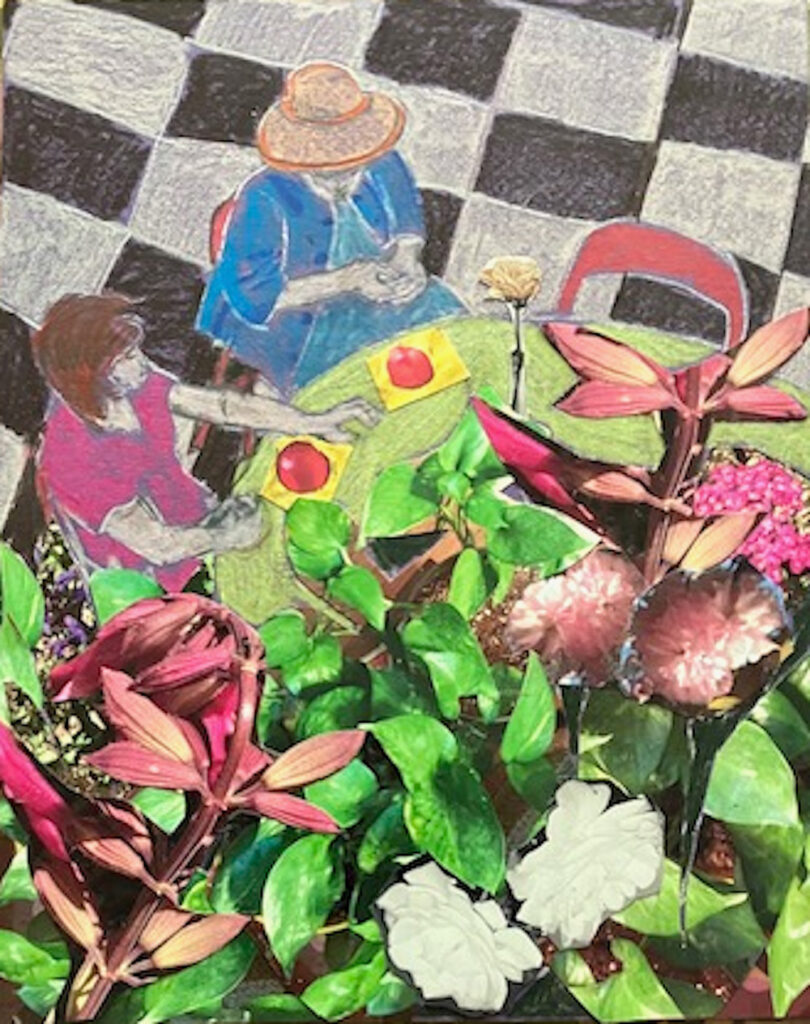
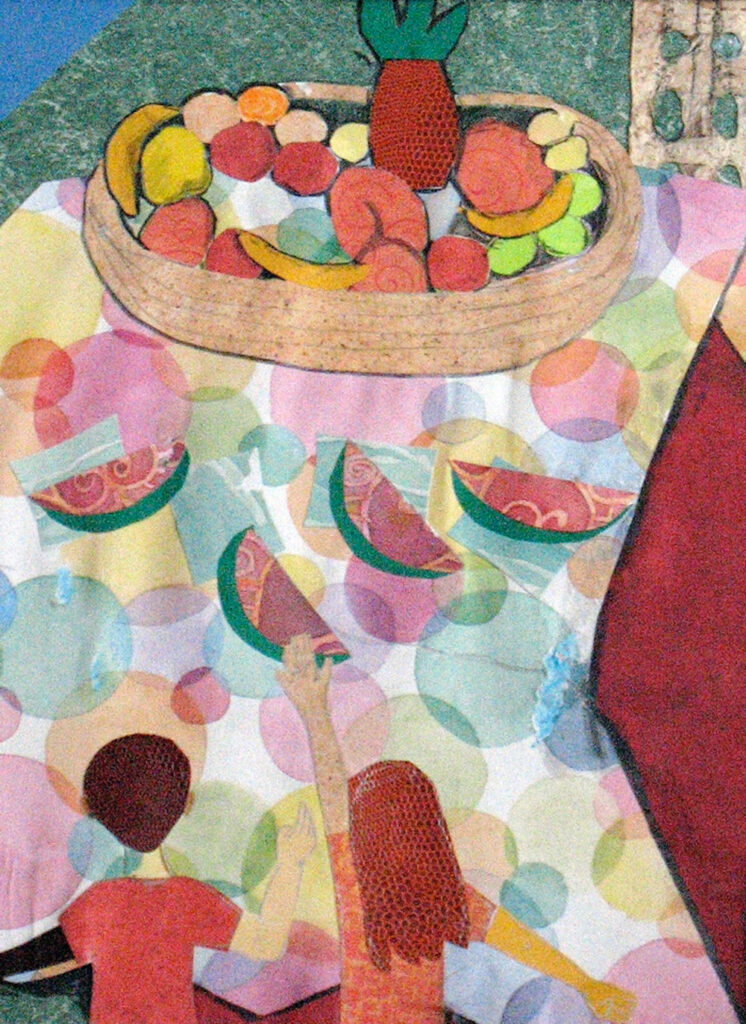
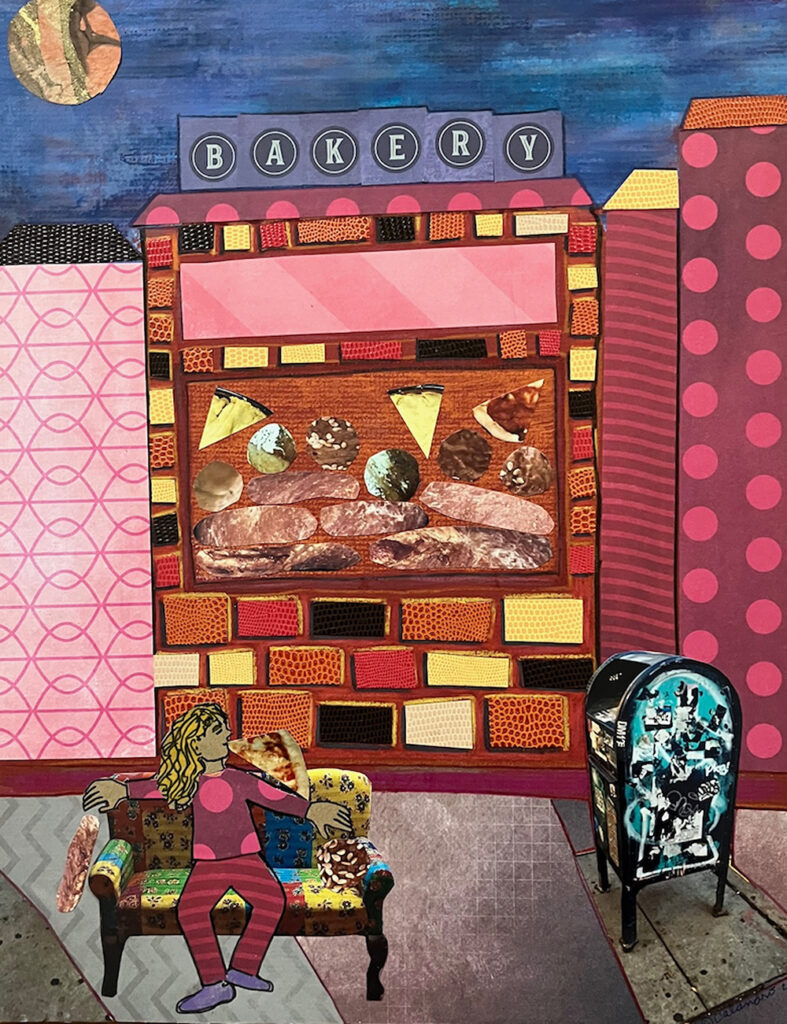
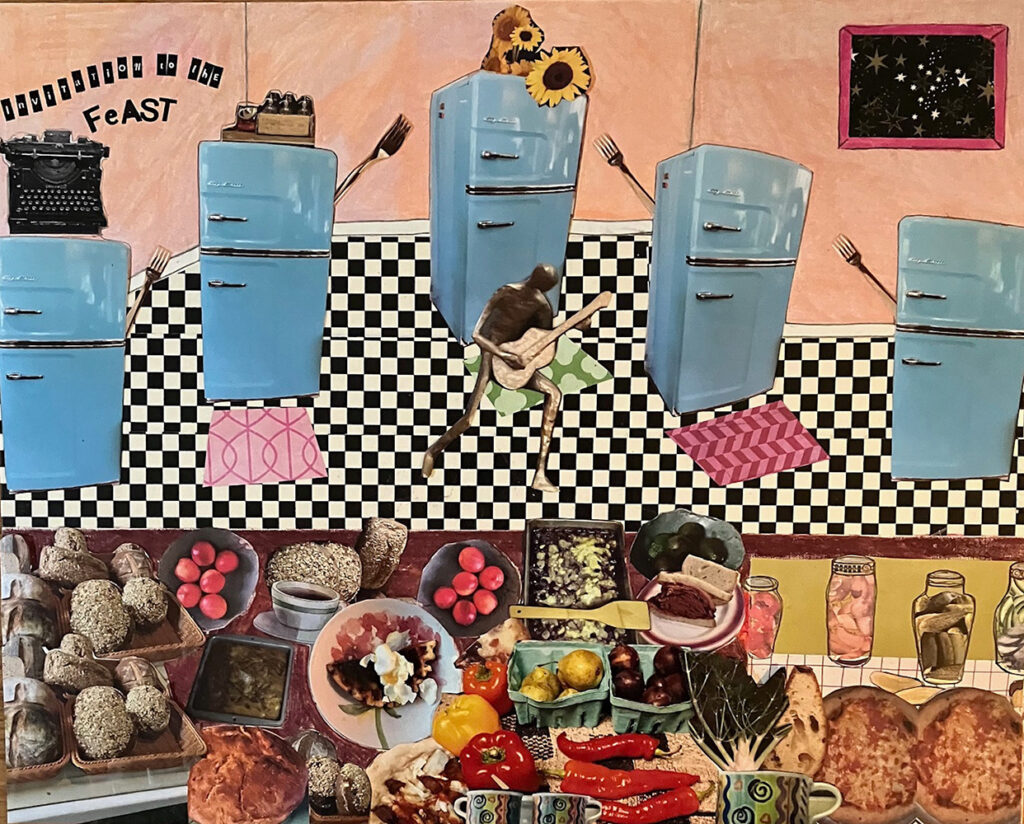



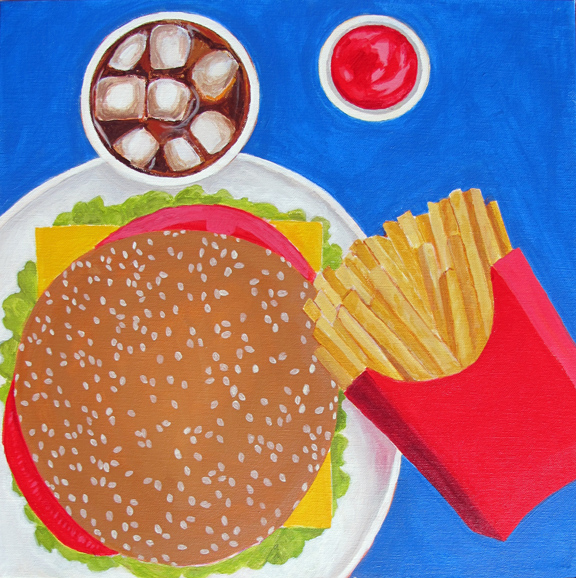
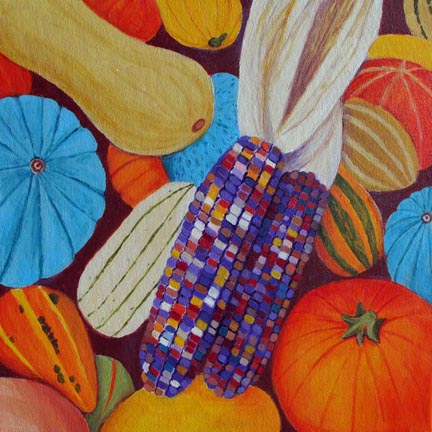


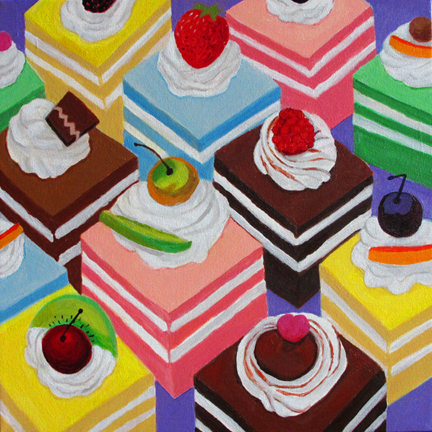
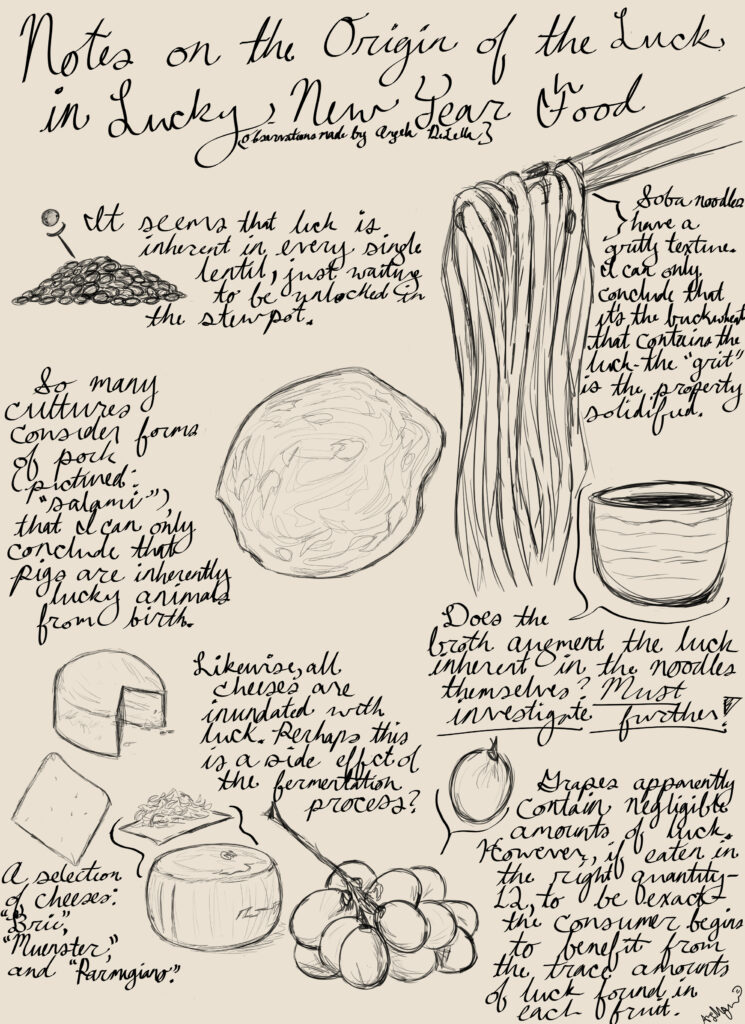
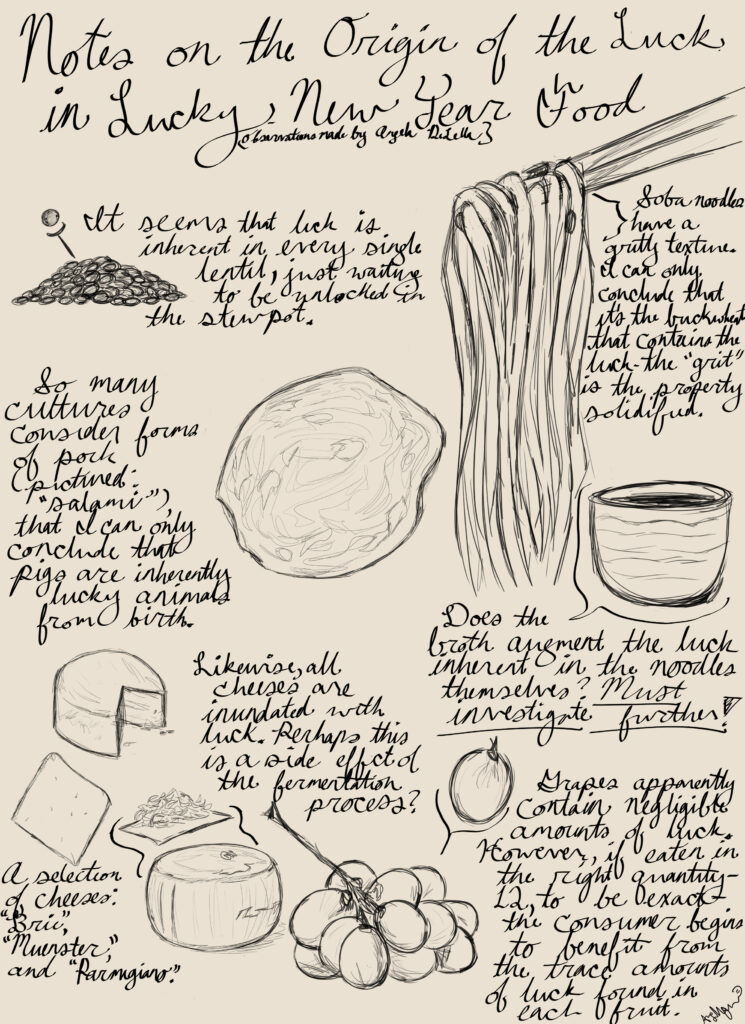

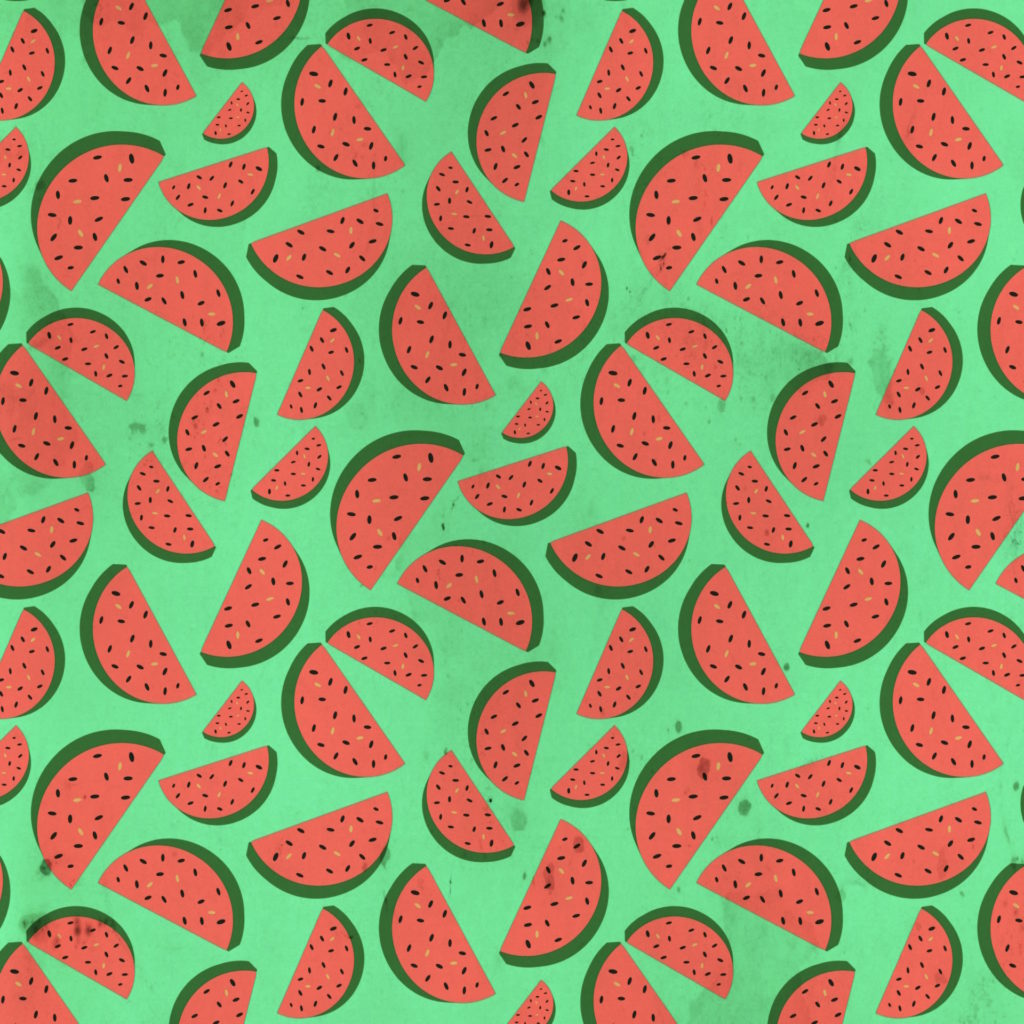
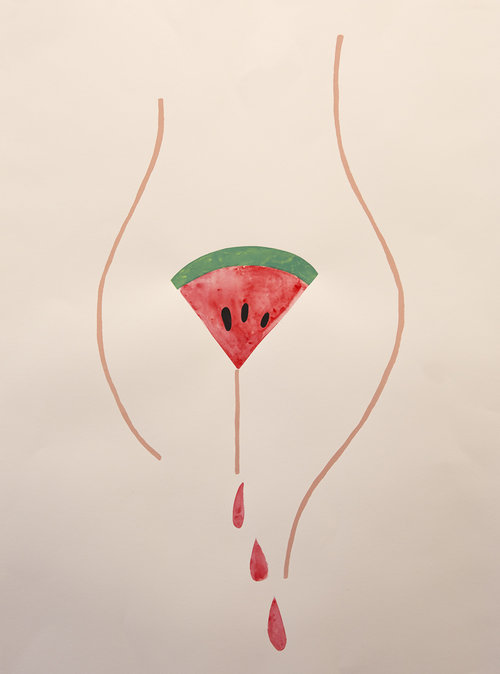


 Lou Bank is a Brooklyn based photographer and zine-maker. They shoot people, balloons and leftover food. They think of their work as studying mundane absurdities. When they’re not creating you can find them climbing neon-colored plastic rocks and trying really hard not to kill all their plants.
Lou Bank is a Brooklyn based photographer and zine-maker. They shoot people, balloons and leftover food. They think of their work as studying mundane absurdities. When they’re not creating you can find them climbing neon-colored plastic rocks and trying really hard not to kill all their plants.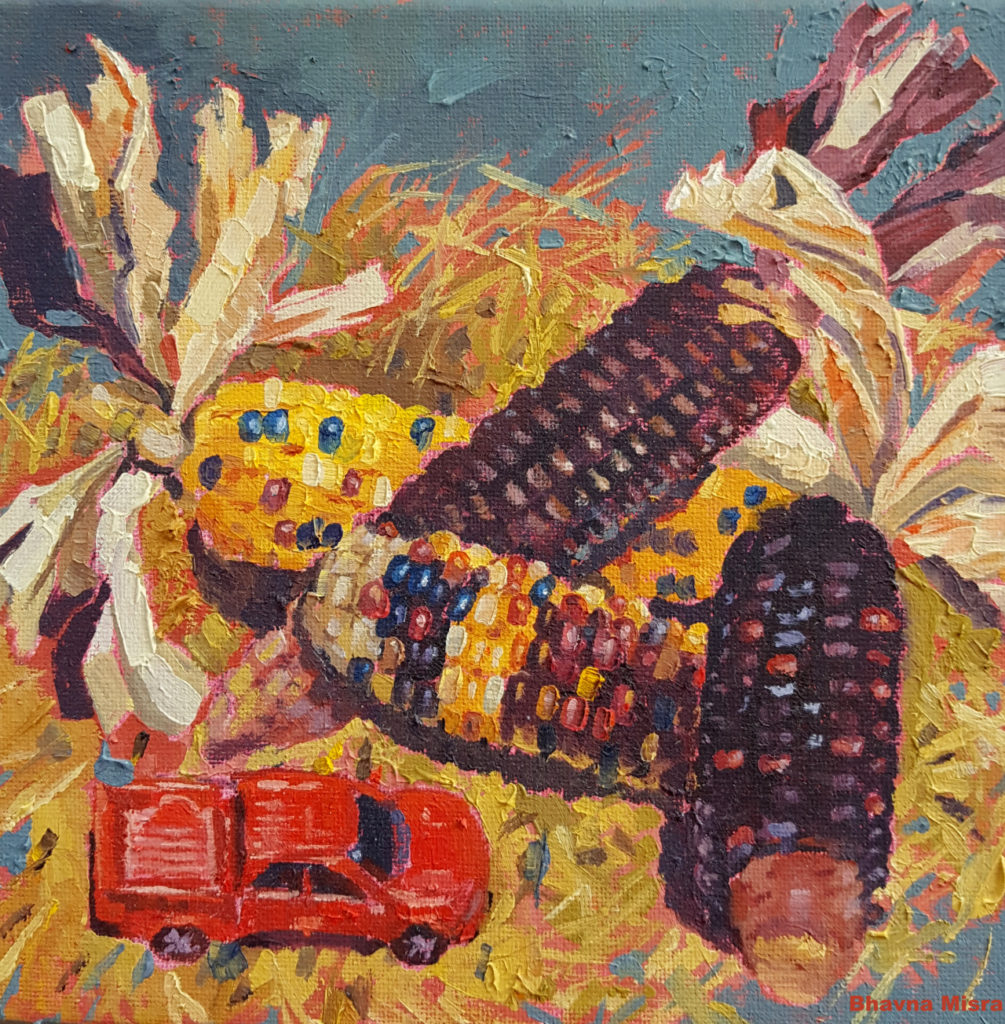

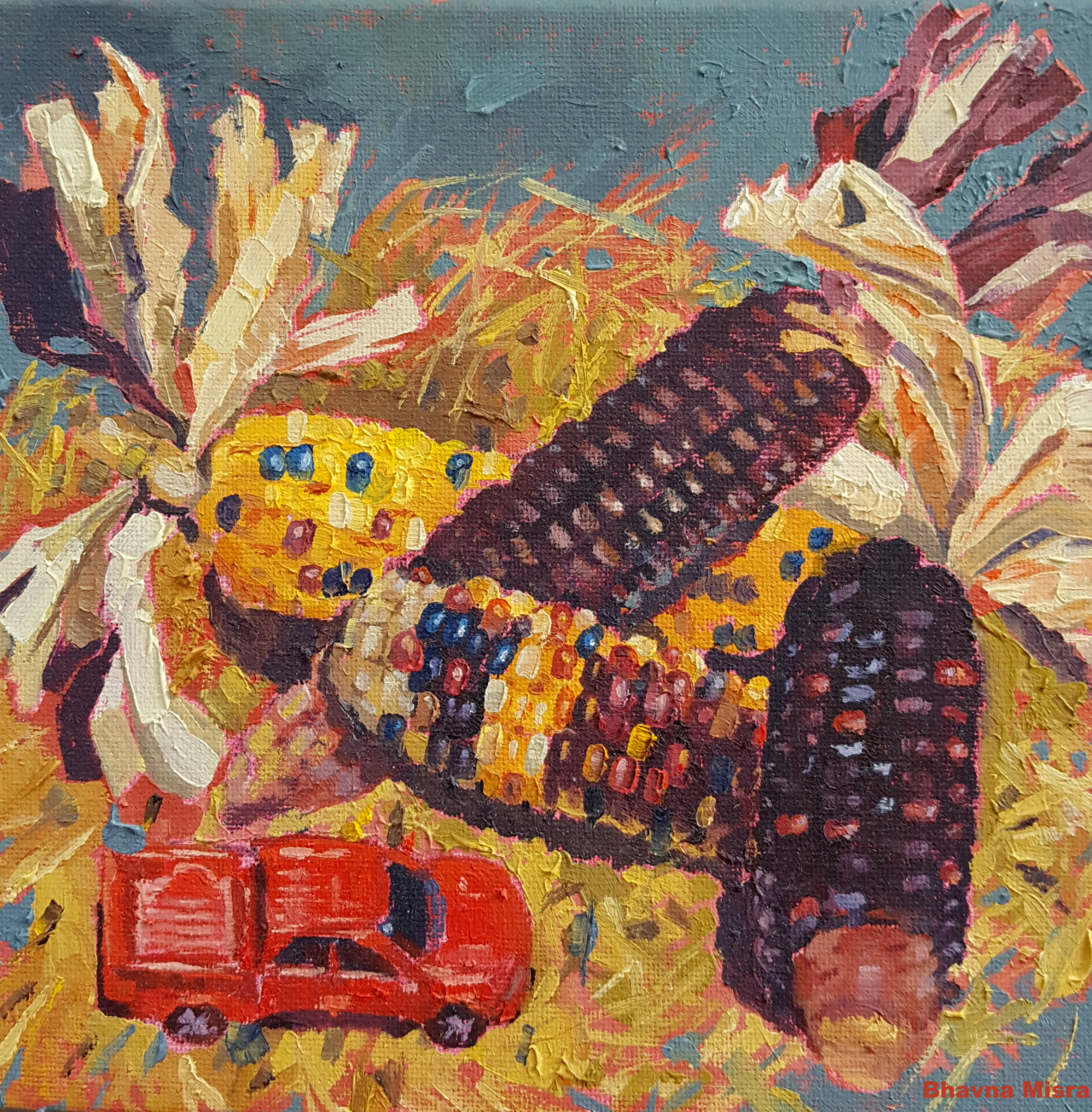

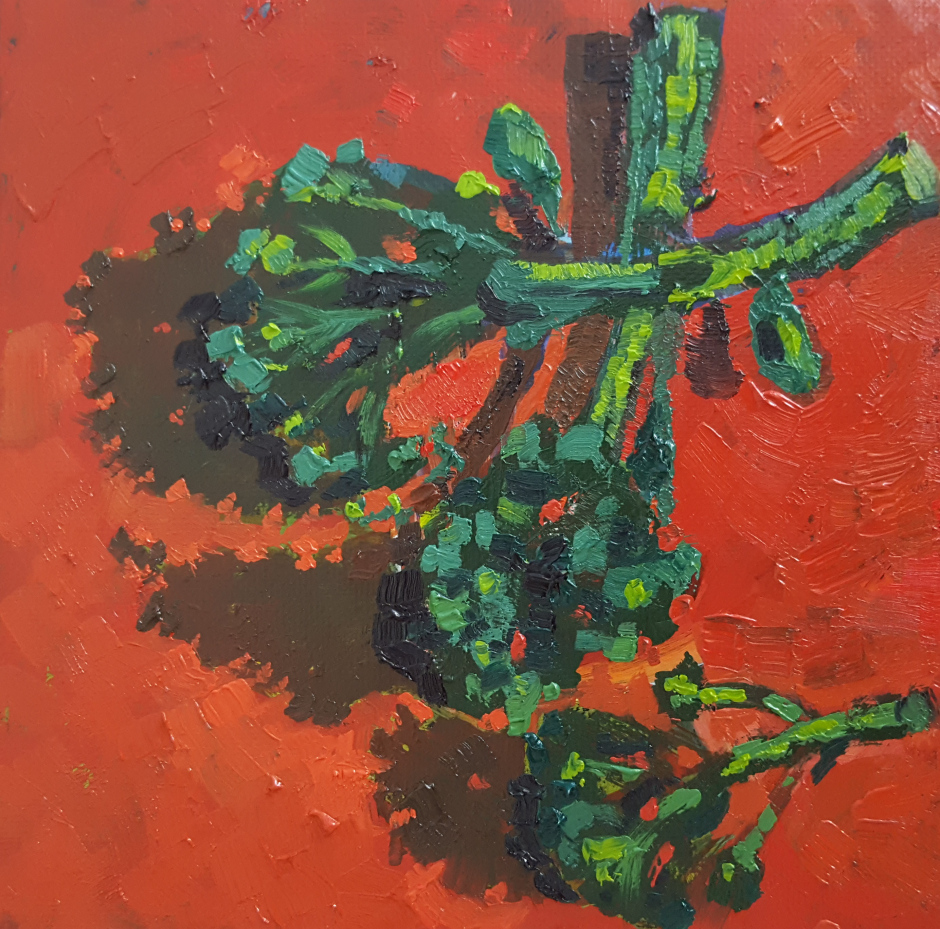
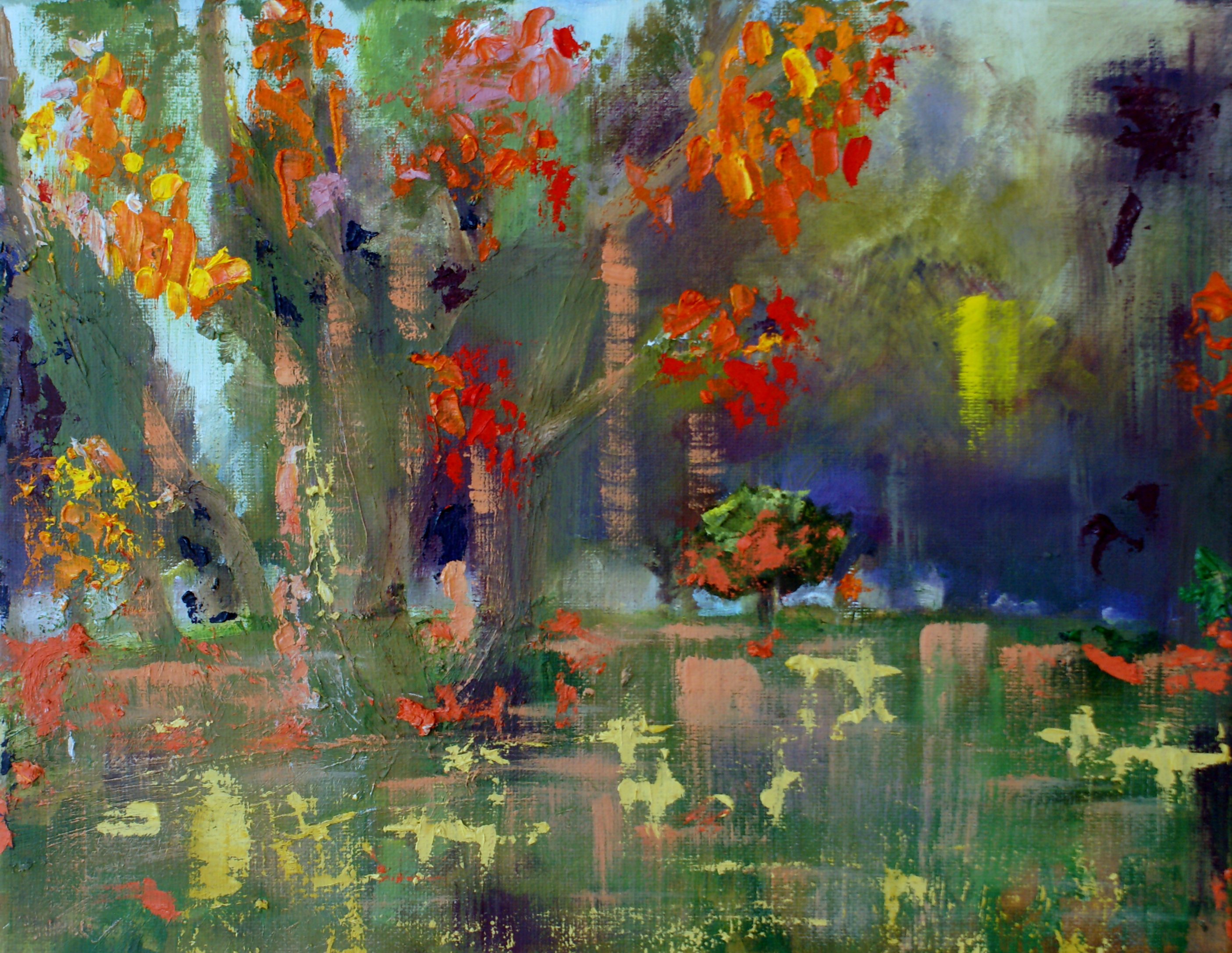

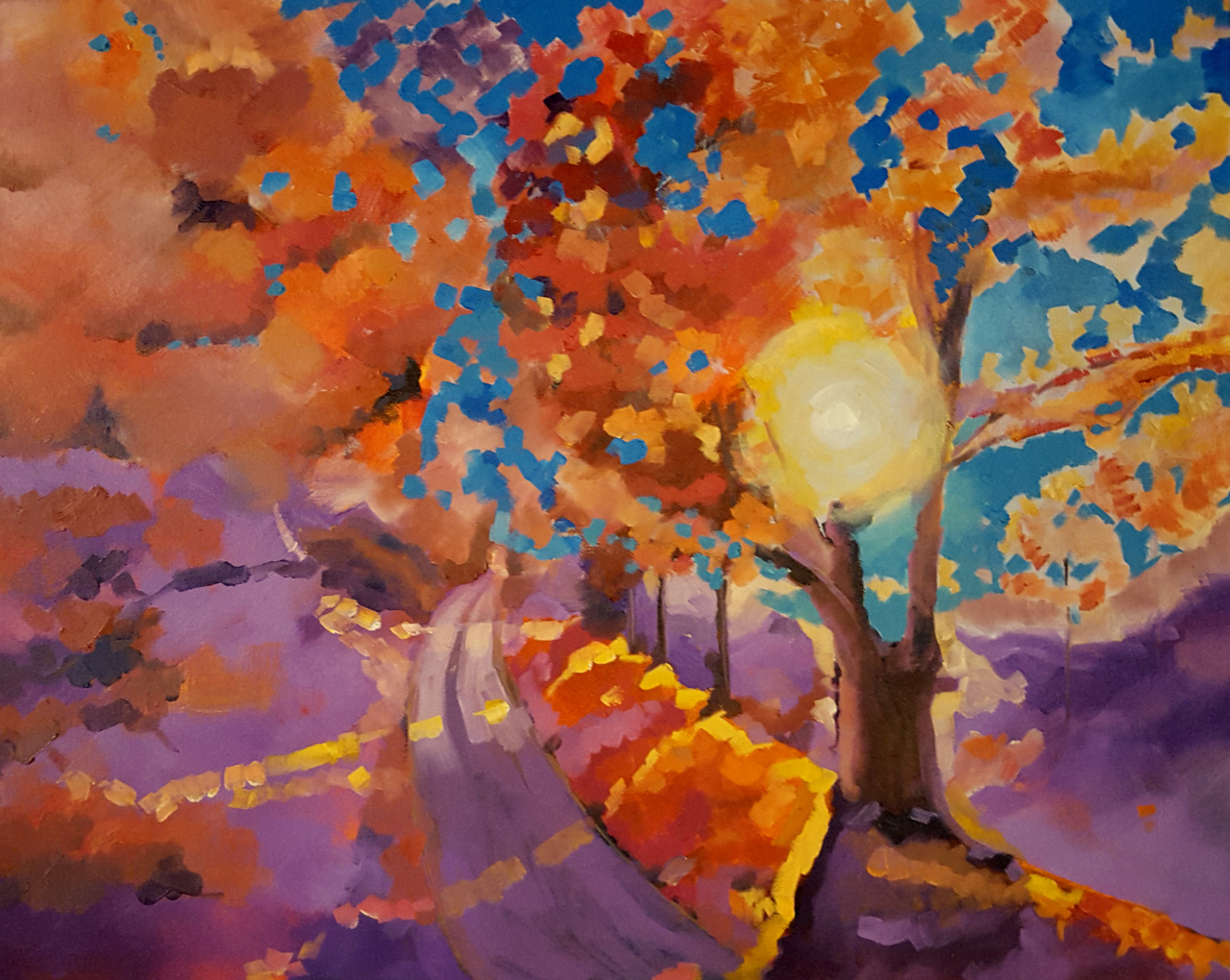
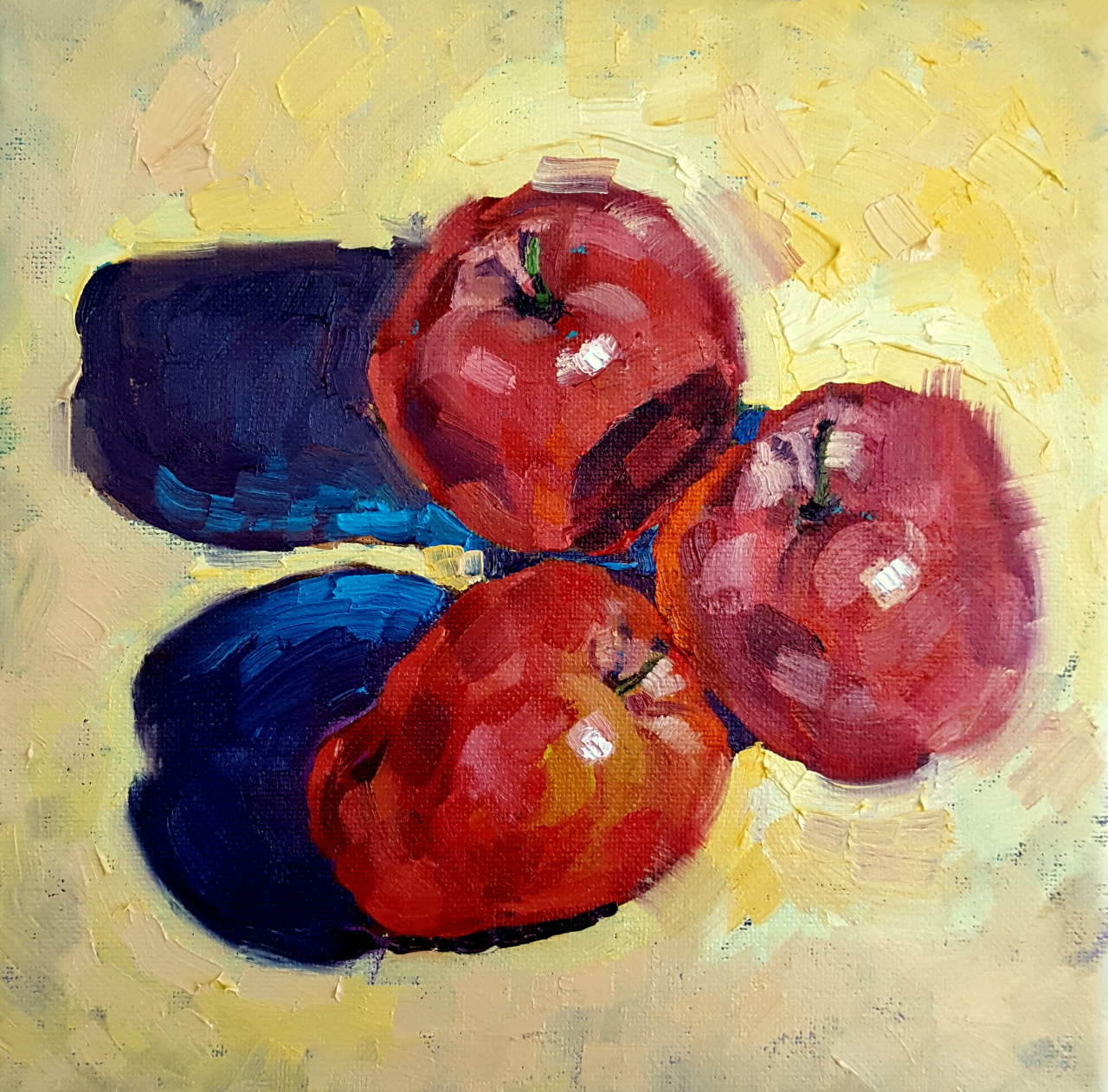

 Bhavna Misra has been painting since she was a little girl. She grew up in the beautiful region of Himachal in India, surrounded by forests of pine trees, Himalayan mountains, green valleys, clear-water lakes, and diverse wildlife that made a lasting impression on her artistic endeavors. She never doubted that she’d be a painter one day!
Bhavna Misra has been painting since she was a little girl. She grew up in the beautiful region of Himachal in India, surrounded by forests of pine trees, Himalayan mountains, green valleys, clear-water lakes, and diverse wildlife that made a lasting impression on her artistic endeavors. She never doubted that she’d be a painter one day!
